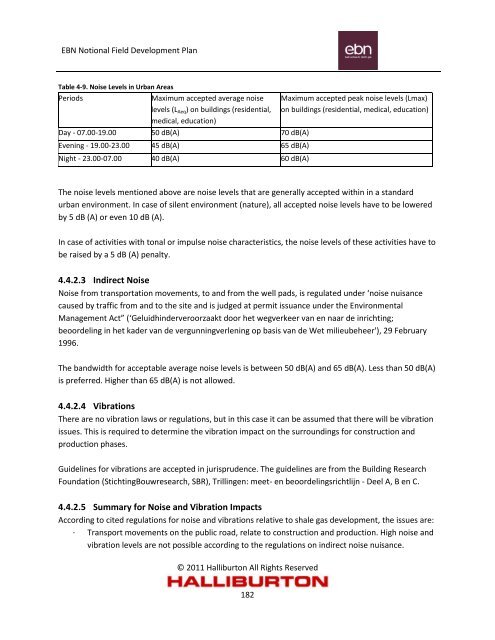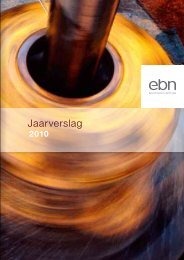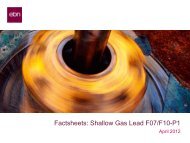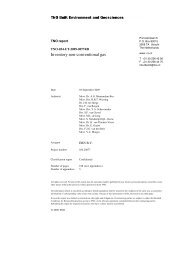Notional Field Development Final Report - EBN
Notional Field Development Final Report - EBN
Notional Field Development Final Report - EBN
Create successful ePaper yourself
Turn your PDF publications into a flip-book with our unique Google optimized e-Paper software.
<strong>EBN</strong> <strong>Notional</strong> <strong>Field</strong> <strong>Development</strong> Plan<br />
Table 4-9. Noise Levels in Urban Areas<br />
Periods<br />
Maximum accepted average noise<br />
levels (L Aeq ) on buildings (residential,<br />
medical, education)<br />
Day - 07.00-19.00 50 dB(A) 70 dB(A)<br />
Evening - 19.00-23.00 45 dB(A) 65 dB(A)<br />
Night - 23.00-07.00 40 dB(A) 60 dB(A)<br />
Maximum accepted peak noise levels (Lmax)<br />
on buildings (residential, medical, education)<br />
The noise levels mentioned above are noise levels that are generally accepted within in a standard<br />
urban environment. In case of silent environment (nature), all accepted noise levels have to be lowered<br />
by 5 dB (A) or even 10 dB (A).<br />
In case of activities with tonal or impulse noise characteristics, the noise levels of these activities have to<br />
be raised by a 5 dB (A) penalty.<br />
4.4.2.3 Indirect Noise<br />
Noise from transportation movements, to and from the well pads, is regulated under ‘noise nuisance<br />
caused by traffic from and to the site and is judged at permit issuance under the Environmental<br />
Management Act” (‘Geluidhinderveroorzaakt door het wegverkeer van en naar de inrichting;<br />
beoordeling in het kader van de vergunningverlening op basis van de Wet milieubeheer'), 29 February<br />
1996.<br />
The bandwidth for acceptable average noise levels is between 50 dB(A) and 65 dB(A). Less than 50 dB(A)<br />
is preferred. Higher than 65 dB(A) is not allowed.<br />
4.4.2.4 Vibrations<br />
There are no vibration laws or regulations, but in this case it can be assumed that there will be vibration<br />
issues. This is required to determine the vibration impact on the surroundings for construction and<br />
production phases.<br />
Guidelines for vibrations are accepted in jurisprudence. The guidelines are from the Building Research<br />
Foundation (StichtingBouwresearch, SBR), Trillingen: meet- en beoordelingsrichtlijn - Deel A, B en C.<br />
4.4.2.5 Summary for Noise and Vibration Impacts<br />
According to cited regulations for noise and vibrations relative to shale gas development, the issues are:<br />
· Transport movements on the public road, relate to construction and production. High noise and<br />
vibration levels are not possible according to the regulations on indirect noise nuisance.<br />
© 2011 Halliburton All Rights Reserved<br />
182







